Talk to our experts
1800-120-456-456
- Speech on Youth


Speech on Youth For Students and Children
The youth shoulders the future of a country and it has the potential to bring about a revolution for the betterment of the country. They can introduce the newest advancements without compromising on the cultural heritage of our country. Education and empowerment are the two most important factors that the youth of our country should be enlightened about. Hence it is always important to facilitate the overall development of the youth to ensure the development of our nation. Here we have provided a long and a short speech on youth in English for the perusal of students. Also, a 10-line speech about youth has been provided below, so that kids can write essays on their own based on those points.
Long Speech on Youth
Good morning all of you present over here. Today I am here to speak on youth, and I am thrilled to share my opinions on the topic of youth empowerment. Well, to begin with, I would like to reiterate that the future of a nation lies in the hands of its youth. The more we empower our youth today, the brighter tomorrow our nation will witness.
The first thing that we have to ensure for the development of our country is that the youth of our country get an opportunity for education. Though the right to education is one of the fundamental rights as per our Constitution, yet, even today, the young kids in the rural parts of our country are deprived of this basic human right. This leads to a lack of awareness among them and eventually when they grow up there is a lack of employment opportunities. Therefore it is as important to educate the youth of the rural parts of our country as it is to educate the urban kids.
One major point that we should be keeping at the forefront is that the methods and subjects of education have to be optimized as per the need of the hour. Education has become a posh affair in the metro cities and that has also led to the reduction in the rate of literacy. The youth of our country has to be provided with basic education at a minimum of costs.
I believe, apart from primary education, it is important to educate the youth on socio-political state affairs. In this way, they can make the best call when it comes to choosing a career that will ensure their individual development as well as the collective development of our nation. The youth of our country has the ability to provide physical as well as intellectual labour. Today, our youth is pursuing higher studies and research in foreign countries, in subjects like agriculture, horticulture, and so on. They are going to great lengths to procure the best of information and newest technologies on these subjects so that they can educate more people in our country on their occupation. This will eventually lead to the overall development of our country.
Since the youth of our country are our torchbearers, it is really important that they are directed on the right path. They should be well informed of the current affairs and the crises that the world is going through. They should be well aware of the struggles and achievements of the great leaders of their country. They should be able to understand the sense of compassion and brotherhood. They should be well-read of the Constitution, their rights, and duties and should lead by example.
All the education they receive will empower them and make them confident to face adversities bravely and to take every situation in their stride. So here, to conclude my speech on youth, I would like to quote Swami Vivekananda “Belief in yourself and the world will be at your feet.”.
Short Speech on Youth
My greetings to everyone present over here. I am <name>. Today I am here for elocution on youth empowerment. I gratefully acknowledge this opportunity.
The youth of a country is the torchbearer of its future, and it is very important to educate our youth with the correct values. The great leaders of our country like Swami Vivekanda, Netaji Subhash Chandra Bose, Mahatma Gandhi, have always encouraged and guided the youth on the right path. The youth of our society has the potential to bring about much-needed changes and lead by example for the next generations.
The youth of our country has to invest their intellectual as well as physical labour to run the wheels of our economy steadily. They should be provided with every opportunity to educate themselves on the significant past events as well as on the latest developments in the world. Knowledge can enable them to take up the moot subjects of our country and resolve the existing issues. It is the duty of the youth of our nation to work towards the progress of the rural and unprivileged population.
The youth of our country has to be educated about the new technologies and changes taking place around the world. This will help them to adopt a progressive mindset, be compassionate towards the weak and unprivileged, and work together with them towards a brighter future.
10-Line Speech about Youth
The key to the future lies with the youth of a nation.
It is important to educate the youth and enlighten them on the vital role they play in the wellbeing of our nation.
Not only the urban youth, but the young kids of the rural parts of India also have to be well educated to progress a step towards a brighter future.
The youth of India has to be well informed of the severe struggles of our freedom fighters so that a strong value system is inculcated among them, and they don’t waste what they have now.
They should be well-versed with current affairs as well.
All basic resources of living must be provided to the young kids for their proper development.
The youth of our country should be completely aware of our Constitution so that they can fight for their rights and serve their duties.
They should be provided with scholarships and fellowships so that they can pursue higher education and research.
This, in turn, will help them to grow intellectually as well.
Our youth should be well aware of their responsibility towards our nation and work towards a better tomorrow.

FAQs on Speech on Youth
1. Are youth robust?
An entire country's strength comes from its youth. Their energy and courage are unparalleled. They're capable of changing a country's destiny through their creativity. Only the youth have the power to make such a change.
2. What role does the youth play in society?
All nations are built on the strength and vitality of their youth, and they play a critical role within society. Youth who make a difference can have a significant impact on society for generations to come. These groups serve as mirrors for society, demonstrating our unwillingness to explore our own potential.
3. How important are the youths?
It is crucial to building an ideal society in which the youth is involved. It's clear that the youths are entirely dedicated to their work and fully understand the role they play. Youths can contribute to decreasing multigenerational poverty by using their brains in productive ways. Youth can also help to preserve their communities and the environment.
4. What does youth need most?
According to youth development research, meeting four basic human needs is crucial: belonging, mastery, independence, and generosity. It is evident that young people whose needs are met in a positive way tend to become good citizens and contributors to their communities.
5. How does the essay define youth?
A person's youth is a valuable time in their lives. Youth is a child who has grown out of childhood but has not yet turned into an adult. There are many characteristics associated with teenagers, such as heroism, toughness, muscularity, stimulation, and judgemental attitudes.
Young people hold the key to creating a better future

Image: Fateme Alaie/Unsplash
.chakra .wef-1c7l3mo{-webkit-transition:all 0.15s ease-out;transition:all 0.15s ease-out;cursor:pointer;-webkit-text-decoration:none;text-decoration:none;outline:none;color:inherit;}.chakra .wef-1c7l3mo:hover,.chakra .wef-1c7l3mo[data-hover]{-webkit-text-decoration:underline;text-decoration:underline;}.chakra .wef-1c7l3mo:focus,.chakra .wef-1c7l3mo[data-focus]{box-shadow:0 0 0 3px rgba(168,203,251,0.5);} Klaus Schwab

.chakra .wef-9dduvl{margin-top:16px;margin-bottom:16px;line-height:1.388;font-size:1.25rem;}@media screen and (min-width:56.5rem){.chakra .wef-9dduvl{font-size:1.125rem;}} Explore and monitor how .chakra .wef-15eoq1r{margin-top:16px;margin-bottom:16px;line-height:1.388;font-size:1.25rem;color:#F7DB5E;}@media screen and (min-width:56.5rem){.chakra .wef-15eoq1r{font-size:1.125rem;}} Youth Perspectives is affecting economies, industries and global issues

.chakra .wef-1nk5u5d{margin-top:16px;margin-bottom:16px;line-height:1.388;color:#2846F8;font-size:1.25rem;}@media screen and (min-width:56.5rem){.chakra .wef-1nk5u5d{font-size:1.125rem;}} Get involved with our crowdsourced digital platform to deliver impact at scale
Stay up to date:, youth perspectives.
Listen to the article
- Young people are the most affected by the crises facing our world.
- They are also the ones with the most innovative ideas and energy to build a better society for tomorrow.
- Read the report "Davos Labs: Youth Recovery Plan" here .
Have you read?
Youth recovery plan.
Young people today are coming to age in a world beset by crises. Even before the COVID-19 pandemic devastated lives and livelihoods around the world, the socio-economic systems of the past had put the liveability of the planet at risk and eroded the pathway to healthy, happy, fulfilled lives for too many.
The same prosperity that enabled global progress and democracy after the Second World War is now creating the inequality, social discord and climate change we see today — along with a widening generational wealth gap and youth debt burden, too. For Millennials, the 2008 financial crisis and the Great Recession resulted in significant unemployment, huge student debt and a lack of meaningful jobs. Now, for Generation Z, COVID-19 has caused school shutdowns, worsening unemployment, and mass protests.
Young people are right to be deeply concerned and angry, seeing these challenges as a betrayal of their future.
But we can’t let these converging crises stifle us. We must remain optimistic – and we must act.
The next generation are the most important and most affected stakeholders when talking about our global future – and we owe them more than this. The year 2021 is the time to start thinking and acting long-term to make intergenerational parity the norm and to design a society, economy and international community that cares for all people.
Young people are also the best placed to lead this transformation. In the past 10 years of working with the World Economic Forum’s Global Shapers Community, a network of people between the ages of 20 and 30 working to address problems in more than 450 cities around the world, I’ve seen first-hand that they are the ones with the most innovative ideas and energy to build a better society for tomorrow.
Over the past year, Global Shapers organized dialogues on the most pressing issues facing society, government and business in 146 cities, reaching an audience of more than 2 million. The result of this global, multistakeholder effort, “ Davos Labs: Youth Recovery Plan ,” presents both a stark reminder of our urgent need to act and compelling insights for creating a more resilient, sustainable, inclusive world.

One of the unifying themes of the discussions was the lack of trust young people have for existing political, economic and social systems. They are fed up with ongoing concerns of corruption and stale political leadership, as well as the constant threat to physical safety caused by surveillance and militarized policing against activists and people of colour. In fact, more young people hold faith in governance by system of artificial intelligence than by a fellow human being.
Facing a fragile labour market and almost bankrupt social security system, almost half of those surveyed said they felt they had inadequate skills for the current and future workforce, and almost a quarter said they would risk falling into debt if faced with an unexpected medical expense. The fact that half of the global population remains without internet access presents additional hurdles. Waves of lockdowns and the stresses of finding work or returning to workplaces have exacerbated the existential and often silent mental health crisis.
So, what would Millennials and Generation Z do differently?
Most immediately, they are calling for the international community to safeguard vaccine equity to respond to COVID-19 and prevent future health crises.
Young people are rallying behind a global wealth tax to help finance more resilient safety nets and to manage the alarming surge in wealth inequality. They are calling to direct greater investments to programmes that help young progressive voices join government and become policymakers.
I am inspired by the countless examples of young people pursuing collective action by bringing together diverse voices to care for their communities.
To limit global warming, young people are demanding a halt to coal, oil and gas exploration, development, and financing, as well as asking firms to replace any corporate board directors who are unwilling to transition to cleaner energy sources.
They are championing an open internet and a $2 trillion digital access plan to bring the world online and prevent internet shutdowns, and they are presenting new ways to minimize the spread of misinformation and combat dangerous extremist views. At the same time, they’re speaking up about mental health and calling for investment to prevent and tackle the stigma associated with it.
The Global Shapers Community is a network of young people under the age of 30 who are working together to drive dialogue, action and change to address local, regional and global challenges.
The community spans more than 8,000 young people in 165 countries and territories.
Teams of Shapers form hubs in cities where they self-organize to create projects that address the needs of their community. The focus of the projects are wide-ranging, from responding to disasters and combating poverty, to fighting climate change and building inclusive communities.
Examples of projects include Water for Life, a effort by the Cartagena Hub that provides families with water filters that remove biological toxins from the water supply and combat preventable diseases in the region, and Creativity Lab from the Yerevan Hub, which features activities for children ages 7 to 9 to boost creative thinking.
Each Shaper also commits personally and professionally to take action to preserve our planet.
Join or support a hub near you .
Transparency, accountability, trust and a focus on stakeholder capitalism will be key to meeting this generation’s ambitions and expectations. We must also entrust in them the power to take the lead to create meaningful change.
I am inspired by the countless examples of young people pursuing collective action by bringing together diverse voices to care for their communities. From providing humanitarian assistance to refugees to helping those most affected by the pandemic to driving local climate action, their examples provide the blueprints we need to build the more resilient, inclusive, and sustainable society and economy we need in the post-COVID-19 world.
We are living together in a global village, and it’s only by interactive dialogue, understanding each another and having respect for one another that we can create the necessary climate for a peaceful and sustainable world.
Don't miss any update on this topic
Create a free account and access your personalized content collection with our latest publications and analyses.
License and Republishing
World Economic Forum articles may be republished in accordance with the Creative Commons Attribution-NonCommercial-NoDerivatives 4.0 International Public License, and in accordance with our Terms of Use.
The views expressed in this article are those of the author alone and not the World Economic Forum.
Related topics:
The agenda .chakra .wef-n7bacu{margin-top:16px;margin-bottom:16px;line-height:1.388;font-weight:400;} weekly.
A weekly update of the most important issues driving the global agenda
.chakra .wef-1dtnjt5{display:-webkit-box;display:-webkit-flex;display:-ms-flexbox;display:flex;-webkit-align-items:center;-webkit-box-align:center;-ms-flex-align:center;align-items:center;-webkit-flex-wrap:wrap;-ms-flex-wrap:wrap;flex-wrap:wrap;} More on Youth Perspectives .chakra .wef-nr1rr4{display:-webkit-inline-box;display:-webkit-inline-flex;display:-ms-inline-flexbox;display:inline-flex;white-space:normal;vertical-align:middle;text-transform:uppercase;font-size:0.75rem;border-radius:0.25rem;font-weight:700;-webkit-align-items:center;-webkit-box-align:center;-ms-flex-align:center;align-items:center;line-height:1.2;-webkit-letter-spacing:1.25px;-moz-letter-spacing:1.25px;-ms-letter-spacing:1.25px;letter-spacing:1.25px;background:none;padding:0px;color:#B3B3B3;-webkit-box-decoration-break:clone;box-decoration-break:clone;-webkit-box-decoration-break:clone;}@media screen and (min-width:37.5rem){.chakra .wef-nr1rr4{font-size:0.875rem;}}@media screen and (min-width:56.5rem){.chakra .wef-nr1rr4{font-size:1rem;}} See all

Young people are becoming unhappier, a new report finds

A generation adrift: Why young people are less happy and what we can do about it
Andrew Moose and Ruma Bhargava
April 5, 2024

Lessons in leadership and adventure from Kat Bruce

How countries can save millions by prioritising young people's sexual and reproductive health
Tomoko Fukuda and Andreas Daugaard Jørgensen
March 4, 2024

This is how to help young people navigate the opportunities and risks of AI and digital technology
Simon Torkington
January 31, 2024

Why we need to rebuild our social contract with the world's children
Catherine Russell
January 17, 2024
Speech about Youth for Students and Children
3 minutes speech about youth.
Good afternoon Ladies and gentlemen. I am here before you today to deliver a speech about youth. Life has given us a huge and noble gift and that is the youth. Biologically youth is a particular stage of life when an individual is young, and often means the time between childhood and adulthood (maturity). This age represents “the appearance, freshness, vigor, spirit, etc., characteristic of one who is young”.

Source: pixabay.com
Youth is a lifetime experience that may shape an individual. It creates the level of dependency, which can be marked in various ways according to different cultural perspectives. At this phase of life, the youth is always driven by fantasy or freedom and the power to choose his or her response.
But all this must be cautiously exercised and every step should be planned. It is the best and appropriate phase to accomplish the dual goals of intelligence and character.
Youth is a critical age of development, a period of uncertainty when everything is in ferment. A youth personality possesses a mixture of both stages; a child and an adult. Their emotions change every time. Like he can be selfish at certain times or turn out to be selfless the very next day.
The same person may also turn out to be rebellious one day. This age is full of heroism, toughness, muscle, stimulation, curiosity, judgmental attitude and even much more. Youth, being argumentative in nature, develop an attitude of apt rationale and judgment.
Youths in Nation Building
The youths have a much more important role in nation-building than you might think. The future of the country depends on them and they represent it at every level. Every youth is equally responsible, for a country’s future. They are the building blocks of a country.
The youths are very energetic and enthusiastic. They have the ability to learn and adapt to the environment. Similarly, they are willing to learn and act on it as well to achieve their goals. Social reforms and improvement of our society is in the hands of youth.
We cannot make changes or progress without the youth of a country. we are the witness of how the development of any country requires active participation from the youth generation.
For any country, in any field, whether it is the technical field or sports field, youth is needed. It does not matter which field we want to progress. It is our responsibility to help the youth in playing this role properly.
Get the Huge list of 100+ Speech Topics here
Youth Issues and Dealing
Drug abuse is a major youth problem. They use drugs to deal with other issues affecting them and get addicted to it. Peer pressure or poor parenting also result in drug addiction. School violence these days has become a major phenomenon in schools where youths riot and get violent.
Carrying weapons to harm and injure others among the youths is a harmful youth issue. They get into the race to show themselves powerful. Materialism is another major youth issue. These issues are not only harmful to the youths but society too has to pay for this. Proper parenting and education is most vital and should involve bringing up children in a way that they understand the vices of society.
The basic step to solving this problem from roots starts from home and our education systems. The education board should include youth issues in the system so that they are addressed and dealt with even before youths get involved.
Youth is the best period of life to cherish a big dream full of passion and energy. Although, the period is also full of joy, dreams, adventures yet they have to be looked for with the eyes open. It is the actual time when we can provide form and shapes to our ideas for the economic development of society.
To conclude I must say that it is the time to move towards the destination which can be made possible through vocational awareness and critical study of individual differences.
Read Essays for Students and Children here !
Customize your course in 30 seconds
Which class are you in.

Speech for Students
- Speech on India for Students and Children
- Speech on Mother for Students and Children
- Speech on Air Pollution for Students and Children
- Speech about Life for Students and Children
- Speech on Disaster Management for Students and Children
- Speech on Internet for Students and Children
- Speech on Generation Gap for Students and Children
- Speech on Indian Culture for Students and Children
- Speech on Sports for Students and Children
- Speech on Water for Students and Children
16 responses to “Speech on Water for Students and Children”
this was very helpful it saved my life i got this at the correct time very nice and helpful
This Helped Me With My Speech!!!
I can give it 100 stars for the speech it is amazing i love it.
Its amazing!!
Great !!!! It is an advanced definition and detail about Pollution. The word limit is also sufficient. It helped me a lot.
This is very good
Very helpful in my speech
Oh my god, this saved my life. You can just copy and paste it and change a few words. I would give this 4 out of 5 stars, because I had to research a few words. But my teacher didn’t know about this website, so amazing.
Tomorrow is my exam . This is Very helpfull
It’s really very helpful
yah it’s is very cool and helpful for me… a lot of 👍👍👍
Very much helpful and its well crafted and expressed. Thumb’s up!!!
wow so amazing it helped me that one of environment infact i was given a certificate
check it out travel and tourism voucher
thank you very much
Leave a Reply Cancel reply
Your email address will not be published. Required fields are marked *
Download the App

Empowering Today’s Youth

Young people are capable of doing incredible and even beyond belief things. When young people are inspired, educated, and raised in an environment where others openly encourage and value their opinions and thoughts on different issues, shaping and developing our society would come so much better and easier.
According to United Nations data, there are 1.2 billion young people aged 15 to 24 years of age, accounting for 16 percent (%) of the global population. With this number, it is safe to say that youth have the power to decide and shape the future, not just of a country; they can define and mold the eventual fate of the world as well.
The very reason why we continue to promote youth empowerment within communities around the world is that we want to inspire and give them the drive they need in order to take control of their future and their lives. Continuous Youth Empowerment will lead to young people's development and improvement of skills they will need in the future. Also, knowing and discovering their full potential and capabilities will result in unleashing their best traits and qualities as human beings, giving them better chances of a better future.

Here are 3 ways you can empower the youth:
Because knowledge is power, we must educate and present true and honest education to young people in order for them to have the right weapons and defenses in facing life’s challenges.
Make it known that their opinions and thoughts about certain topics and issues are heard and understood by allowing them to freely use their voices as young people; it could be in an organization or voicing out in general. This way we can strengthen and ensure our partnership with youth and make a secure connection with them.
Let Youth know that failure is anything but something terrible to happen for it is essential for them to figure out what made this turn out badly so that they know what to enhance and improve.
Reference/s:
- Why Is Youth Empowerment Important? (bgca.org)
- The Importance of Youth Empowerment—and How Childhope Heeds the Call
View the discussion thread.
Related Stories

The Real Life
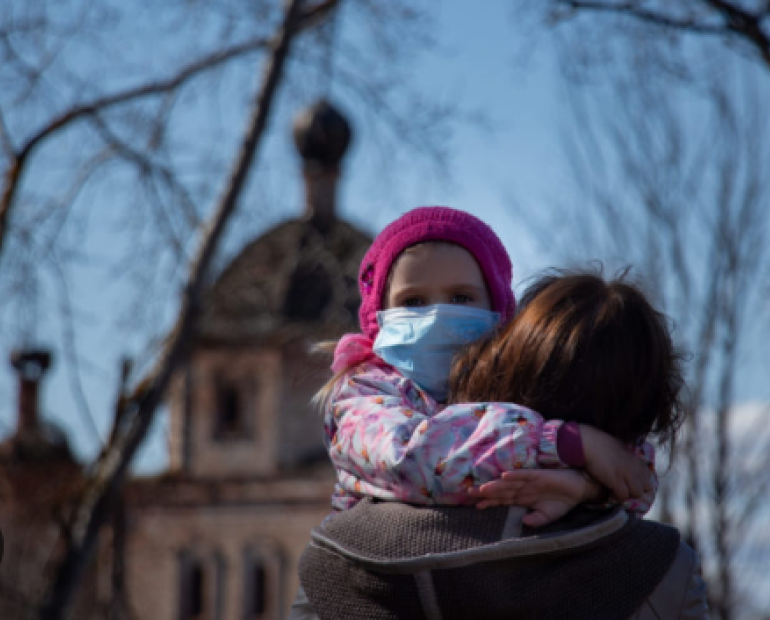
Do We Care Enough? Nurturing Compassion into Action for Children's Rights

Every Child deserves sustainable education
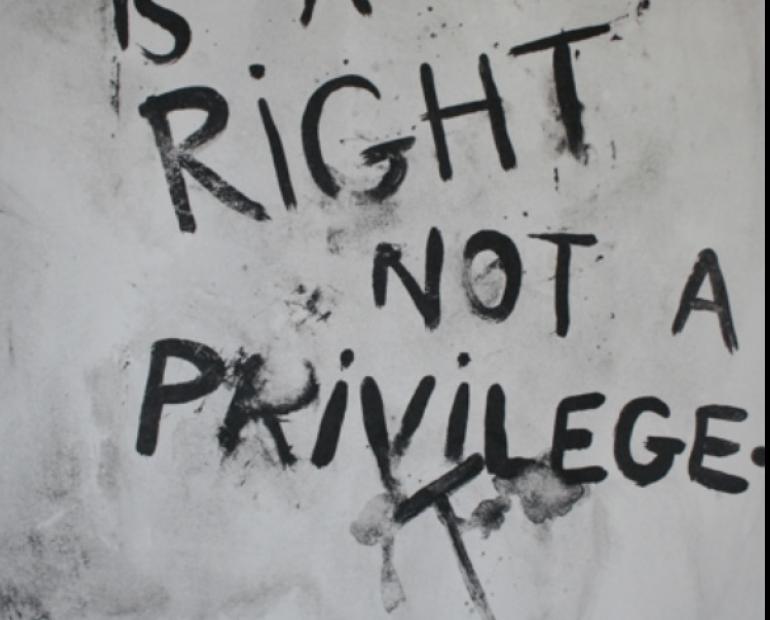
Education is our right
C 2019 Voices of Youth. All Rights Reserved.

TED is supported by ads and partners 00:00
Inspiring the Youth
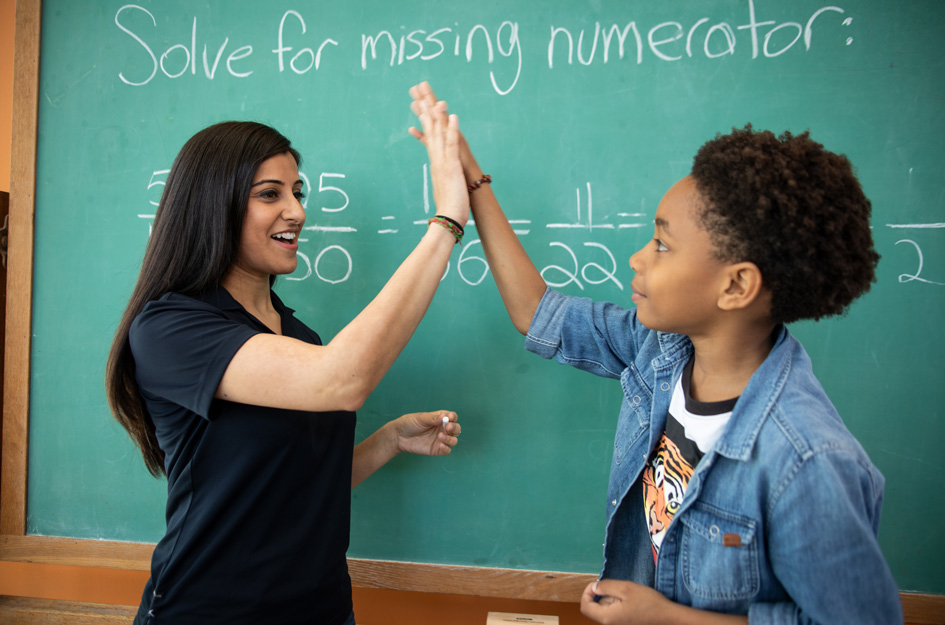
Why Is Youth Empowerment Important?
At the core of youth empowerment is the belief that young people are capable of incredible things. When young people have exposure to inspiring ideas and opportunities and the tools to build their confidence – they can take on anything and everything.
An empowered young person recognizes their capabilities, self-determination and worth. They feel comfortable trying new things. They have the confidence to take risks and are aware that failure is a step toward progress, not a sign to give up. They don’t use the opinions of others as their guideposts in life. They stand up for their values. And they know they have built a foundation of self-empowerment to rely on in times of struggle or when they are feeling lost and need to recalibrate.
Youth empowerment is incredibly important – it gives kids and teens the courage to believe in themselves, to not be swayed by the opinions of others, and to go after their dreams.
While some kids and teens are born with an innate sense of “what if” and the courage to act on it, most look to the world around them to gain the ideas, excitement and skills to explore their potential and test the waters of their capabilities. Encouragement and opportunities go a long way in helping a kid or teen come out of their shell and take on new experiences, and a caring mentor – parent, caregiver, teacher or youth development provider – can be a powerful ally in youth empowerment.
Here are a few ways you can help empower a young person in your life:
Help kids and teens explore their interests and potential. Getting curious is the first step to feeling empowered. Read books and watch movies together about a variety of pursuits and careers and see where your kid’s interests are. Ask questions like “Can you see yourself doing something like this?” When they take on a hobby, explore different ways they can build on this interest and deepen confidence in their abilities.
Give them the space and trust to practice autonomy. Kids and teens are natural contributors, but often don’t feel adults expect them to do things well or participate at all. Offer safe, supportive opportunities for your kid to be autonomous and make clear your expectations for their contributions – whether that’s a toddler learning to take their plate to the dishwasher or empowering a teenager to decorate their own space.
Speak with honesty. Knowledge is power, and when we are open, direct and honest with young people, this not only helps expand their understanding of the world around them, but it builds their own self-awareness. Equipped with information to be successful, they are more likely to see the big picture and make smarter decisions, while not sweating the small stuff.
Trust their ability as leaders. From working on school projects to managing a household chore to leading community service events, in youth-led efforts, let young people own the trajectory of the assignment, from planning to execution. You can always be a safety net for when they make mistakes or need to be redirected but give them the space to try it their way first. Afterwards, ask for their feedback on what went right and what could be improved.
When youth are empowered, they feel confident and capable. They become active contributors and collaborators, excited to explore their impact on the world around them.
Boys & Girls Clubs’ caring mentors and life-enhancing programs empower millions of young people each year. Learn how to get involved with Boys & Girls Clubs of America.
Stay in the Know
Boys & Girls Clubs of America provides mentorship, programs and meaningful life experiences that boost youth self-esteem, build confidence and contribute to overall positive and healthy wellbeing. Sign up for our newsletter to receive the latest resources and stories.
SIGN UP FOR NEWSLETTER

STAY INFORMED WITH NEWS & UPDATES

35 Inspiring Speeches for Youth
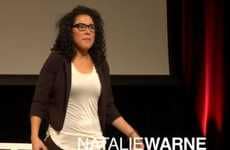
From Youth Involvement in Business to Reforming Youth Motives

Speech: “You are the leaders of today”
Date: Saturday, 11 March 2017
Madame Amina Mohammed, Deputy Secretary-General of the United Nations—thank you for taking time out of your busy schedule and coming to inspire us—UN Women and youth at the opening of this first of its kind CSW Youth Forum on the occasion of the 61st Session of the Commission on the Status of Women. Indeed, your empowering messages and the assurance that you and the Secretary-General have got the youth's back and that you will champion the youth creating Gender equality movement is very encouraging for us all.
Madame Phumzile Mlambo-Ngcuka, Executive Director of UN Women—this is the realization of your epiphanies, your vision and drive that has brought us to this milestone. As the dialogue you just had with youth shows, you not only ignite commitment of youth to gender equality but draw energy for the cause from them.
Ms. Malaya Harper, Secretary General of the World YWCA – thank you for your amazing partnership and mobilization from last year.
Dear youth advocates – thank you, young women and men for coming from over 85 countries, representing all intersectionalities of circumstance, in record numbers.
This forum has been oversubscribed and only the walls of this room have been a constraint – physically – but in fact, virtually we are reaching out to and engaging millions of youth around the world via live webcast and social media.
This is your forum – and you have led it, made it open and inclusive and democratic, and you have made a thousand flowers of ideas, aspirations, motivations and actions bloom.
Besides generations Y and Z – the millennial, we need to acknowledge the engagement of so many generations—people of a certain age like me—who give the intergenerational combustion that it needs to blast off into space.
Your participation in this forum speaks of your bold commitment to achieving gender equality and actively participate in key processes that shape our changing world. CSW is the unique, largest and most potent standard setting and stakeholder convening gender equality forum in the world.
The theme for this year’s Youth Forum is “ Youth Create Gender Equality – young women’s economic empowerment in the changing world of work.”
The largest youth cohort in history is entering the labour market in unprecedented numbers and faces the biggest jobs crisis!
Youth unemployment has reached epic proportions and within that, young women's access to decent work, to full and productive employment and to the realization of their human rights and gender equality in the world of work is at issue.
The world of work is indeed changing fast, through innovation, increasing mobility and informality. This change must be matched with accelerated progress for the ensuring equal opportunities for all young women and girls.
Never before has the world experienced such dynamic changes in technologies, economies and societies .
These advances are a critical aspect of the ever-changing world of work and you, young people are in a unique position to use innovation and technology to disrupt, to recalibrate, to upend, to challenge inequalities, and be the force that transforms processes and create gender equal societies.
We have also seen that gaps in education have begun to close. However, education is not the only great equalizer. Access to quality education alone is not enough to knock down gender-based discrimination and violence in the world of work.
Despite progress in many social indicators, the labour market continues to keep women out of some jobs and segregates them into others—often the lowest paying ones, in the vulnerable and informal employment, the ones that lack social protection and labour rights… often confined to unpaid care work and domestic work and in what we call the ‘sticky floor’ that keeps women at the bottom of the job scale.
The picture of inequality is dramatic.
- From cooking and cleaning, to fetching water and firewood or taking care of children and the elderly, women—often young women and adolescent girls—bear a disproportionate burden of unpaid work across the world , which is estimated to be valued between 10 and 39 per cent of GDP.
- Women are systematically paid less than men for work of equal value across all regions, countries and sectors. The global gender pay gap is 23 percent and is a major cause of an overall lifetime income inequality between men and women.
- Women are overrepresented in the informal sector around the globe—particularly migrant women and young women—and in developing countries the informal sector is the primary source of employment for women.
- And even for women accessing the highest levels education, the largest underrepresentation and the larger gender pay gaps are usually found at the top of the wage distribution— the ‘glass ceiling’ for highly skilled women workers .
Despite huge challenges ahead of us, realizing gender equality has a deadline, and it is 2030.
2015 was a landmark year for the advancement of the gender equality agenda .
It was a year of groundbreaking commitments with the adoption of a gender equality compact in the 2030 Agenda and the Sustainable Development Goals (SDG) which include a transformative, comprehensive and universal stand-alone goal—SDG 5—give me a High Five—on achieving gender equality and the empowerment of all women and girls.
Also, the Addis Ababa Action Agenda on Financing for Development, the Paris Climate Change Agreement and the outcome of the Global Study and Review of the United Nations’ Security Council resolution 1325, have recognized that women’s progress will play an indispensable role in the achievement of sustainable peaceful and prosperous development.
Our campaign Planet 50-50 by 2030 is a reminder of the urgency of accelerated action, full and effective implementation and significantly increased resources if the 2030 Agenda is to be achieved .
Investing in women, young women and girls has a multiplier effect on poverty eradication, productivity as well as sustainable economic growth.
There are countless studies that tell us that women have greater abilities to fully contribute to the economy, the workplace, their homes and communities if they have access to equal opportunities for education, health care and social protection services and to decent work, and the recognition and valuing of unpaid care and domestic work, if they have a life free of violence and discrimination.
These abilities can be even greater if women have access and control over economic resources as well as full and equal opportunities for leadership at all levels of decision-making in all sectors of the political, economic and public life.
Equal participation for young women in the economy means a potential boost of 28 trillion USD to global annual GDP by 2025. This potential must be fully realized.
Information and communication technology play a key role to enhance education, learning opportunities and skill development. They also open doors for youth engagement, for political participation and for women and girls to advocate for their interests, rights and for social transformation.
And in this transformation, you young women and young men have a job!!
You can demand that discriminatory laws and policies be addressed, including discrimination and violence against young women and girls .
Currently, only 67 countries have laws against gender discrimination in hiring practices, while at least 155 have one or more gender-based legal restrictions on women’s employment and entrepreneurship.
This systematic barrier must be broken to strengthen the foundation for the economic empowerment of all women and girls.
Additionally, we know that people, especially young women, are not just interested in contributing to their own families, but also their communities. However, you can only be successful in your pursuits when countries invest in your development.
Evidence suggest that with equal access to education, technical skills, and professional opportunities, women will unlock the potential to transform the ‘youth bulge’ into an ‘opportunity bulge’ for sustainable development and gender equality.
Today, we sit 18 months after the adoption of the 2030 Agenda for sustainable development. As we celebrate our achievements, let us also remain cognizant of the road that still lies ahead. I cannot emphasize enough, the critical role that you, young women and young men, play as key drivers of implementing, monitoring and evaluating the Sustainable Development Goals.
Governments, decision makers, the United Nations, all of us are accountable for addressing the structural barriers which affect the interests, talents, and intellectual capital of girls and young women.
As the world of work continues to change, young women and men are called to take a stand and shape how these trends translate over the next 13 years—by 2030.
The future envisioned for humanity and our shared planet— Planet 5050 by 2030—across all 17 Sustainable Development Goals, rests on fully freeing the power and economic and political potential of young women and girls .
You are not the leaders of tomorrow …. you are the leaders of today!
It is time to act on the high ambitions of the 2030 Agenda and guarantee that every young woman and girl can thrive.
Let me conclude by reminding every one of you that your voice matters. Use it! This is your world, this is your space, demand it, claim it, enjoy it, live it and transform it!
Together we can shake the universe so that not one woman, not one girl anywhere should ever be restricted, held back, and denied her rights …. So that no woman…. no young woman like you, should ever be told again that “she cannot, she will not, she dare not, and that she should not!”
On the contrary, Planet 50-50 is the world where she is, where already does! She Can! She Will!
By harnessing youth power, we will not only ensure a Planet 50-50 latest by 2030, but make the gains irreversible.
- ‘One Woman’ – The UN Women song
- UN Under-Secretary-General and UN Women Executive Director Sima Bahous
- Kirsi Madi, Deputy Executive Director for Resource Management, Sustainability and Partnerships
- Nyaradzayi Gumbonzvanda, Deputy Executive Director for Normative Support, UN System Coordination and Programme Results
- Guiding documents
- Report wrongdoing
- Programme implementation
- Career opportunities
- Application and recruitment process
- Meet our people
- Internship programme
- Procurement principles
- Gender-responsive procurement
- Doing business with UN Women
- How to become a UN Women vendor
- Contract templates and general conditions of contract
- Vendor protest procedure
- Facts and Figures
- Global norms and standards
- Women’s movements
- Parliaments and local governance
- Constitutions and legal reform
- Preguntas frecuentes
- Global Norms and Standards
- Macroeconomic policies and social protection
- Sustainable Development and Climate Change
- Rural women
- Employment and migration
- Facts and figures
- Creating safe public spaces
- Spotlight Initiative
- Essential services
- Focusing on prevention
- Research and data
- Other areas of work
- UNiTE campaign
- Conflict prevention and resolution
- Building and sustaining peace
- Young women in peace and security
- Rule of law: Justice and security
- Women, peace, and security in the work of the UN Security Council
- Preventing violent extremism and countering terrorism
- Planning and monitoring
- Humanitarian coordination
- Crisis response and recovery
- Disaster risk reduction
- Inclusive National Planning
- Public Sector Reform
- Tracking Investments
- Strengthening young women's leadership
- Economic empowerment and skills development for young women
- Action on ending violence against young women and girls
- Engaging boys and young men in gender equality
- Sustainable development agenda
- Leadership and Participation
- National Planning
- Violence against Women
- Access to Justice
- Regional and country offices
- Regional and Country Offices
- Liaison offices
- UN Women Global Innovation Coalition for Change
- Commission on the Status of Women
- Economic and Social Council
- General Assembly
- Security Council
- High-Level Political Forum on Sustainable Development
- Human Rights Council
- Climate change and the environment
- Other Intergovernmental Processes
- World Conferences on Women
- Global Coordination
- Regional and country coordination
- Promoting UN accountability
- Gender Mainstreaming
- Coordination resources
- System-wide strategy
- Focal Point for Women and Gender Focal Points
- Entity-specific implementation plans on gender parity
- Laws and policies
- Strategies and tools
- Reports and monitoring
- Training Centre services
- Publications
- Government partners
- National mechanisms
- Civil Society Advisory Groups
- Benefits of partnering with UN Women
- Business and philanthropic partners
- Goodwill Ambassadors
- National Committees
- UN Women Media Compact
- UN Women Alumni Association
- Editorial series
- Media contacts
- Annual report
- Progress of the world’s women
- SDG monitoring report
- World survey on the role of women in development
- Reprint permissions
- Secretariat
- 2023 sessions and other meetings
- 2022 sessions and other meetings
- 2021 sessions and other meetings
- 2020 sessions and other meetings
- 2019 sessions and other meetings
- 2018 sessions and other meetings
- 2017 sessions and other meetings
- 2016 sessions and other meetings
- 2015 sessions and other meetings
- Compendiums of decisions
- Reports of sessions
- Key Documents
- Brief history
- CSW snapshot
- Preparations
- Official Documents
- Official Meetings
- Side Events
- Session Outcomes
- CSW65 (2021)
- CSW64 / Beijing+25 (2020)
- CSW63 (2019)
- CSW62 (2018)
- CSW61 (2017)
- Member States
- Eligibility
- Registration
- Opportunities for NGOs to address the Commission
- Communications procedure
- Grant making
- Accompaniment and growth
- Results and impact
- Knowledge and learning
- Social innovation
- UN Trust Fund to End Violence against Women
- About Generation Equality
- Generation Equality Forum
- Action packs
- Get involved
Speech at the 2nd World Youth Forum
Speech at the 2nd World Youth Forum, Sharm El-Sheikh, Egypt
November 4, 2018

Tegegnework Gettu
UNDP Associate Administrator
I am honoured to be with you to speak on sustaining peace. I will start with an overarching reflection on the concept in a global context, before coming to the specificities of the realities across Africa. I will conclude by drawing some forward-looking conclusions on how to sustain peace in Africa and beyond. The Evolving Nature of threats to Peace and the Sustaining Peace Agenda The end of the Cold War ushered an era of consensus on geopolitical issues that, throughout the 1990s, brought nations together in addressing key threats to peace and security around the world. This resulted in a decline in inter-state conflict. Since 1992, there were no more than two interstate conflicts in any given year, and several years experienced no such wars. Yet, conflict has re-emerged with a vengeance, with the tripling of major conflicts and a doubling in civil casualties since 2010. In 2016 more countries were affected by conflict than at any time in last 30 years. But unlike during other periods in history, these violent conflicts are internal. The nature of conflict has changed in other ways, too. Conflicts are more complex due to the increasing role of non-state, as well as external actors. Conflicts are more protracted and a greater share of conflicts have been recurrent, rather than new onsets. Conflicts are increasingly linked to global challenges, such as climate change, disasters linked to natural hazards, cyber security, and international illicit activities. Many of these trends have been documented in the recent joint UN and World Bank publication “Pathways for Peace.” A recognition has emerged, therefore, that the upsurge and changing nature of conflict calls for a more ambitious and integrated approach to conflict prevention. This is reflected in the 2030 Agenda for Sustainable Development, and in what became known as the “sustaining peace” resolutions. Adopted by the UN Security Council and the UN General Assembly in April 2016, these resolutions recognize that: “security, development and human rights are closely interlinked and mutually reinforcing.” They go on to state that: “a comprehensive approach to sustaining peace, particularly through the prevention of conflict and addressing its root causes, strengthening the rule of law at the international and national levels, and promoting sustained and sustainable economic growth, poverty eradication, social development, sustainable development, national reconciliation and unity.” The African context These global trends have been playing out with particular intensity across Africa. In fact, in 2016, Africa accounted for 11 of the 20 of the world’s countries with the highest likelihood of conflict. Although the intensity of violent conflict fell from 55 percent in 2002 to 24 percent in 2011, a growth of violent extremism in specific parts of the continent – while far from being the only determinant and implication of conflict - speaks to the changing nature of conflict. For instance, over 24,000 fatalities and 1.2 million displaced persons resulted from religiously inclined, extreme fundamentalism like the Al-Shabaab, Boko Haram, the Movement for Unity and Jihad, and the Ansar Dine between 2011 and 2015. The fact that development and peace are inextricably linked is recognized not only in the global 2030 Agenda and sustaining peace resolutions, but also in Aspiration 4 of the African leaders’ Agenda 2063 focusing on “a peaceful and secure Africa.” Excellencies, Ladies and Gentlemen, While these agreements provide us with the political framing and set the direction, sustaining peace is both a goal and a process. The process is one through which a common vision guides the actions across all segments of society. This requires sharing tasks and responsibilities across governments, civil society, the private sector, and international actors. And here I want to emphasize, in particular, the role of women. Too often, African women have been seen as marginal to the processes of sustaining peace. Yet, as recognized by the UN Security Council resolution 1325, women have proved to be fundamental to social change that prevents conflicts through their capacity to bridge crises. Women have had powerful voices of moderation and even mediation. Enhancing representation of women at all decision-making levels, while at the same time using women as champions of peace, remains critical. Mobilizing the youth for prevention is another critical part. This requires activities aimed at engaging young people at all levels, from preventing the outbreak, to avoiding the escalation or continuation, and, finally, the recurrence of conflicts. Youth is particularly relevant when it comes to efforts to address the root causes of conflict, and embracing national reconciliation – for which they ultimately have the highest stake. Our experience in UNDP has shown that there is no single pathway to sustaining peace and resilience in the face of fragility, conflict, and violence in Africa. But one fact remains incontrovertible. There are indivisible links between ‘peaceful societies’ and ‘effective, accountable and inclusive institutions’. A stronger focus on prevention requires comprehensive investments towards sustaining peace in all development contexts. Forward-looking reflections: Sustaining Peace in Africa As a starting point to think about the future, it is critical to recognize that the traditional distinction between conflict and non-conflict settings no longer completely holds when we take sustaining peace as the overarching framework. Fragility, conflicts and violence can potentially affect any society, not just those already undergoing, or emerging from, crises. Sustaining peace is not only about ending conflicts and violence, but how to establish social, economic, and political structures that shape incentives for peace. Thus, leaders should promote a seamless, integrated approach across all development settings that include investments in access to basic services like education, health and water; rule of law, justice, security, and human rights; inclusive, accountable and responsive socio-economic and political institutions; and conflict prevention mechanisms. Excellencies, Distinguished Ladies and Gentlemen, I will conclude with three forward-looking reflections. First, conflict prevention has to move towards addressing root causes, addressing long-term development issues such as poverty, inequalities and exclusions – particularly in terms of access to power, resources and services. These were identified in the UN and World Bank report “Pathways for Peace” as contestation arenas that are particularly prone to the risk of conflict. Historically, the largest portion of investment goes to investments that do not address the underlying causes and potential drivers of conflict. Addressing the development needs of the people in marginalized regions – often in remote and sparsely populated areas – may not seem to yield humanitarian or development gains, but can generate large payoffs in reducing the risk of conflict. Second, for the role of the world leaders to yield maximum impact in building and sustaining peace in Africa, we must end fragmentation of efforts across the various international actors. Fragmentation and operating in silos by international actors undermine African governments’ efforts to respond early and effectively to crises and to build and sustain peace. The ongoing reforms in the United Nations System are aimed at promoting greater coherence, synergies and accountability across the United Nations agencies in supporting member states. The development of the support plan to the United Nations Integrated Strategy for the Sahel is another example that fosters coherence. Finally, focusing on systemic prevention is key for sustaining peace. Globalization is shaping systemic risks in Africa. As noted, conflict is linked to challenges ranging from climate change, to cyberwarfare, to transnational crimes. These are issues beyond the capacity of any individual country to address on its own. Global leadership and collective action are critical in addressing these systemic risks. I thank you for your attention.
Related Content
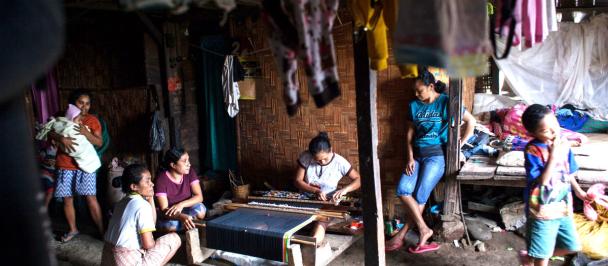
Achieving the SDGS: Potential of Islamic Finance through Innovative investors and instruments
Remarks at UNGA side-event hosted by Government of Malaysia, IsDB and UNDP on Achieving the SDGs: Unleashing the Potential of Islamic Finance through Innovative ...
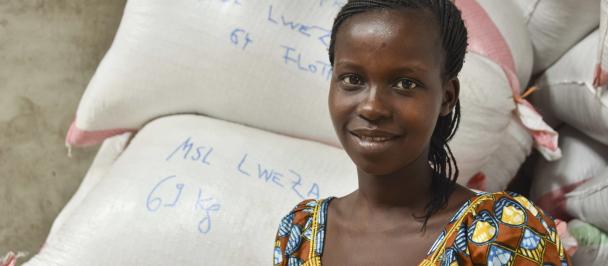
Remarks at Africa-China Sustainable Cooperation on Economic Structural Transformation, Towards 2030 Agenda
Remarks of Mr. Tegegnework Gettu, UN Under-Secretary-General and UNDP Associate Administrator in Djibouti
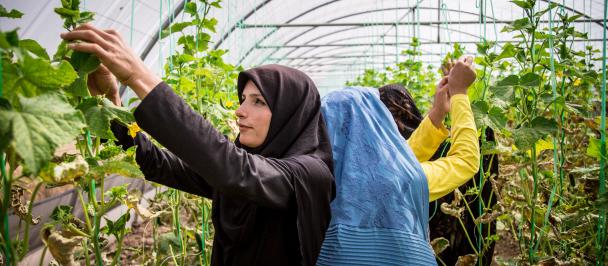
Women’s Economic Empowerment and Financial Inclusion
Welcome remarks on Women’s Economic Empowerment and Financial Inclusion at Group of 77 and China, UNDP and UN Women
Youth Development Insight
Our youth development educators bridge research and practice. In this blog, they offer their views on what's happening in the field of youth development, with an eye to evidence-based research written by themselves and others in our field. We welcome your comments.
Search This Blog
Youth: i think we all need a 'thank-you' speech, i think we all need a 'thank you' speech.
Thank you, Katy for taking the time to reflect on the role a caring adult in 4-H has played in your leadership development. You'll have to report back as you venture off into college and let us know where you've felt the influence of these adults guide you as you take on more responsibilities and venture, engage in more challenging school work, and are faced with increasingly challenging life decisions. Thank you for sharing.

Thank you for your comment, Joanna! I've been at college for a week already, and while I haven't started classes yet, I can tell you that I've already seen the influence of the past adults in my life working. I spent my first Saturday in college doing community service work; I got up at 8 a.m. in order to pick up litter on the side of a Columbia highway. The values of service and leadership that my Key Club advisor taught me encouraged me to take part in this Step Forward Day. Not many college students can say they served others within their first week! I also am continually influenced by my past 4-H leaders as I look for jobs/work study on campus. Right now, I've applied to work as an elementary school student tutor, a job I wouldn't have thought about if I hadn't realized what a big impact young adults can have on the lives of little kids through 4-H. I start classes soon, so I will continue to share as adults continue to influence me!
At 4-H club meetings and other 4-H events, members recite the Pledge of Allegiance
Post a Comment

Speeches on Youth
Reflecting on two years of youth2030 — the first-ever un youth strategy.
Adapted from the statements delivered by the UN Secretary-General’s Envoy on Youth Jayathma Wickramanayake and Deputy Secretary-General Amina J. Mohammed during the briefing to UN Member States, co-hosted by the Permanent Missions of Slovakia
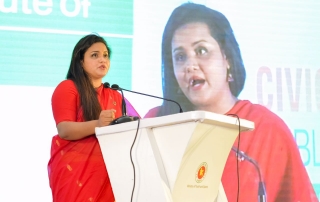
International Youth Day Observance
Remarks by Jayathma Wickramanayake, UN Secretary-General’s Envoy on Youth Bangladesh, 06 August 2018 Excellencies, Ladies and gentlemen, Fellow young people, I would like to begin by thanking the Government of Bangladesh for inviting me to
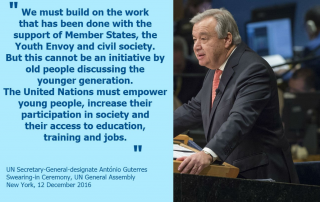
Secretary-General António Guterres’ remarks to the General Assembly on taking the oath of office
New York, USA, 12 December 2016 Thank you very much for all your kind words. I am deeply honoured by the trust and confidence Member States have placed in me, and determined to be guided
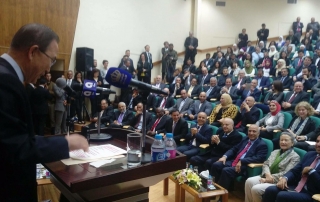
Secretary-General’s remarks at opening dialogue with youth in Jordan
Amman, Jordan, 27 March 2016 Dear students, Asalam Aleykum. Thank you for your warm welcome. I’m very pleased to be here today at the University of Jordan; the oldest school of higher education in the country. This university
Remarks at G7 Working Session on Terrorism
I thank Chancellor Merkel for hosting this working session. I am increasingly concerned by the spread of violent extremist groups and the malicious and hateful ideologies that are fuelling violence and terrorism around the world.

UN Secretary-General’s Envoy on Youth’s speech at launch of #HeForShe
Excellencies, Secretary General, Ban Ki-moon, President Sam Kutesa, President of the General Assembly, Phumzile Mlambo-Ngcuka, Executive Director of UN women, UN Women Goodwill Ambassador Emma Watson, Mr. Kiefer Sutherland Ladies and gentlemen – I honestly
International Youth Day 2013: Secretary-General’s Message
This year’s observance of International Youth Day focuses on the issue of youth migration. Of the annual total of some 214 million international migrants, young people constitute more than 10 per cent, yet too little
‘Keep speaking out’, UN chief urges in message to World Youth Forum

Facebook Twitter Print Email
Although everyone has been deeply affected by the COVID-19 pandemic, the impact on young people has been “especially heartbreaking”, UN Secretary-General António Guterres said on Monday.
In a video messag e to the World Youth Forum in Sharm el Sheikh, Egypt, he urged participants to help shape a better world after the crisis, in line with the conference’s theme.
2022 cannot be yet another year of disrupted education. No effort should be spared to get children's education back on track. pic.twitter.com/ZjbcH2mHKw António Guterres, UN Secretary-General antonioguterres
“Building a better future starts today. So, to the young people attending this forum, keep speaking out. Keep identifying the solutions and actions we need to recover.”
The Secretary-General reeled off some of the devastating impacts COVID-19 has dealt the world’s youth.
Calling for change
More than 1.6 billion have had their education disrupted, while unemployment in their ranks has grown.
Young people have also seen access to services such as health care and counselling dwindle, during a challenging period for mental health.
At the same time, they have stepped up.
“In the streets, and online, they’re calling for change — demanding equality, peace, justice and action on the climate crisis,” said the Secretary-General.
“They’re supporting one another - in their neighbourhoods and on social media. And through events like this one, they’re providing ideas and solutions on how communities can rebuild, and emerge stronger from the pandemic.”
Message to leaders
The forum runs through Thursday and is being held under the theme of Back Together: The World After COVID-19, which the UN chief said is a reminder that there is no time to lose.
Having admonished young people to continue speaking out, the Secretary-General also delivered a message to leaders and policy makers in attendance.
“As you look to recovery, look to young people,” he advised. “Young people are an incredible source of ideas and innovative solutions. Their needs must come first in policy and investment discussions.”
Mr. Guterres said he looks forward to hearing the results of the forum, and to working with participants to shape a better future, beyond the pandemic.
Peace, Development, Creativity
Discussions at the World Youth Forum revolve around three tracks: Peace, Development and Creativity.
It was first held in Sharm el Sheikh in November 2017, according to the official website.
The initiative was developed by a group of young Egyptians at the National Youth Conference that April, who proposed the idea of holding a dialogue with counterparts from around the world.
Since then, three sessions have been held, with the last taking place in 2019.

Adolescence
Teen talk and linguistic evolution, baffled by the language of teenagers.
Posted November 1, 2020 | Reviewed by Abigail Fagan
As the parent of two teenagers, being a linguist did not adequately prepare me for the strange things that sometimes come out of their mouths. For example, "like" is omnipresent, "hecka" punctuates many a phrase and I have been called ‘dude’ by my son more times than Keanu Reeves in Bill and Ted’s Excellent Adventures . But where my expertise as a linguist does come in handy is in understanding that what comes out of the mouths of teens is not linguistic revolution but instead its evolution.
When considering how we use language ourselves, we often fall back on notions of correct or incorrect speech, or simply notice dialects, like British or Australian, that sound different than our own. But we also all adopt a linguistic style, and it is this style that really carries the message of who we are and responds to the social pressures we encounter as we go about our lives.
Whether we are male or female, black or white, band or jock, hipster or nerd, our identities are referenced and reinforced by the linguistic choices we make.
And it is in this space between social identity and group solidarity that the mix of language and the young becomes the most powerful. It is in our teenage years where our linguistic preferences and patterns get set, and where the new forms of language that will eventually become the norms for the wider community are born.
Why? Because adolescence is an intense period of identity formation, and it is less constrained by economic and employment pressure compared to adult speech. Instead, we are exposed to a much more diverse range of linguistic input in contrast to adulthood where we spend most of our time with others who are most like ourselves.
In middle and high school, we are attracted to those who stand out as trendy and cool or edgy and non-conformist. All of these social types come with socio-stylistic markers in dress, music, activities and, crucially, language choices. And, via linguistic innovations, these linguistic trendsetters unknowingly contribute to the shape of language to come.
The Talk of Our Future
A great example of how teen talk starts becoming associated with different adolescent groups is the nerd vs. popular kid division that we all recall (and perhaps were traumatized by) in middle and high school. I’m sure we can easily come up with some of the ways this difference was marked back in our day.
In today’s middle schools, this might be the divide between those sporting Vans and hydro-flasks vs. plain old tennis shoes and no-name water bottles. In other words, certain kids that others view as cool or imitable start a trend simply by wearing or carrying something. Others pick it up because of its association with some quality or attitude that kid gives off, and voila, parents everywhere are being hit up for $40 water bottles. Sound familiar?

Language trends work much the same way, only they are less expensive and generally subtler. For instance, most of the changes in the way we pronounce our vowels, like "cul" for "cool" and "thot" for "that," start in the mouths of youngsters, and then gradually become larger community norms as those teens grow up.
When we look at studies that track sound changes like the voluminous Phonological Atlas of North American English we see that young speakers are leading the charge in most of the shifts affecting our vowel pronunciation this century. Though we might not realize it, these vowel shifts have been in process for decades, meaning we too played a role in this language change when we were teenagers. Just think of the fronted vowel sound in "duuuude" — that’s a shift an earlier generation set in motion. Today’s teens are just continuing our trend.

Another good example? The use of "like" to punctuate our sentences and draw attention to certain aspects of what we are trying to say. You, like, know what I mean? Again "like," known in linguistic terms as a discourse marker, started among adolescent speakers. Though it gets a bad rap, it’s very useful as a linguistic focuser, a marker that signposts the important part of what someone’s trying to say, or as a linguistic approximator that hedges how certain we are about something, aka “It was like 5 or 6 bucks.”
When we look at how these markers catch on, we see not only do they do linguistic work, but also stylistic work — characterizing those who use them as younger and trendy. And linguistic research shows that "like" is much more popular in teen talk, but, as these teens age up, "like" ages up with them, becoming a feature we find often in speakers under 35, though tempered perhaps in degree of use.
New Dogs, New Tricks
Why are young brains so accommodating to new tricks while older speakers stay much the same? Brain plasticity, for one. We widely recognize that developing brains are different from adult brains in many facets of learning and decision making , and language is no different. Less lateralization and more active implicit language learning processes are certainly partly at work in childhood .
But peer-group awareness and the formation of socio-stylistic associations in this age group are also at a peak. In other words, peer pressure ushers in linguistic change.
The vast majority of sociolinguistic research on acquiring new language features shows that kids readily pick up new forms whereas adults show linguistic stabilization, i.e. stick with the same old same old. This shift in children’s speech occurring during adolescence is known as vernacular reorganization , and describes the process of moving from a parent’s system to that more like one’s peers. This is why, for instance, children born to non-native speakers don’t inherit the accent of their parents.
In her book Jocks and Burnouts: Social Categories and Identity in High Schools , sociolinguist Penny Eckert traced how vowel choices varied with teen’s social category affiliation. She found that as kids move from early childhood to teen years, they become increasingly aligned with school-based social categories and aware of the social value of language. As a result, they are attracted to language forms that separate them from parental identity and help them develop a specific youth style.
As the byproduct of all this intense identity work, we are treated to teen slang and weird sayings like the Visco girl’s “And I — oop” or a dude’s "bra," referring not to lingerie but the modern take on "bro." But we are also treated to new forms like changes in how vowels are pronounced and the shift to using "have to" instead of "must" that will end up defining the speech of the next generation. How often do you say "must" anymore?
Still Slang Stressed ?
Of course, such teen talk can often be disconcerting to parents who worry that the youth markers their kids use will hinder their opportunities in life. But much of this stems from our tendency toward "recentism" or the idea that somehow what is happening today is substantively different than what has happened in the past.
And rest assured, teens have always given their parents a linguistic run for their money — i.e. there was a time when using "quite" before adjectives was considered vulgar — and we seem to have survived just fine. Teen’s slang is usually just age-graded use, meaning it will fall by the wayside as they enter the larger world. And the subtler language changes they bring? Well, you just happen to have a front-row seat to hearing the speech of our future.
So relax. The nature of teen talk today is fundamentally no different than the teen talk of yore. Did 17th Century parents get tense when they heard their teens using the pronoun you instead of thou ? Absolutely. But where’s thou now?
Eckert, Penelope. 1989. Jocks and Burnouts: Social Identity in the High School . New York: Teachers College Press.
Labov, William, Sharon Ash, and Charles Boberg 2006. Atlas of North American English: Phonetics, Phonology and Sound Change. New York: Mouton de Gruyter.
Tagliamonte, Sali. 2005. “So who? Like how? Just what? Discourse Markers in the Conversations of Young Canadians.” Journal of Pragmatics 37: 1896-1915.

Valerie Fridland, Ph.D., is a professor of linguistics at the University of Nevada, Reno, and the author of Like, Literally, Dude: Arguing for the Good and Bad English.
- Find a Therapist
- Find a Treatment Center
- Find a Psychiatrist
- Find a Support Group
- Find Online Therapy
- United States
- Brooklyn, NY
- Chicago, IL
- Houston, TX
- Los Angeles, CA
- New York, NY
- Portland, OR
- San Diego, CA
- San Francisco, CA
- Seattle, WA
- Washington, DC
- Asperger's
- Bipolar Disorder
- Chronic Pain
- Eating Disorders
- Passive Aggression
- Personality
- Goal Setting
- Positive Psychology
- Stopping Smoking
- Low Sexual Desire
- Relationships
- Child Development
- Therapy Center NEW
- Diagnosis Dictionary
- Types of Therapy

Understanding what emotional intelligence looks like and the steps needed to improve it could light a path to a more emotionally adept world.
- Emotional Intelligence
- Gaslighting
- Affective Forecasting
- Neuroscience
Amplifying Youth Voices for Sustainable Community Development
Nigeria youth sdgs network ( civil society organization ), #sdgaction33816.
- Description
- SDGs & Targets
- SDG 14 targets covered
- Deliverables & timeline
- Resources mobilized
- Progress reports
Nigeria Youth SDGs Network is a coalition of youth-led and youth-focused civil society organizations localizing the United Nations 2030 agenda via youth leadership, advocacy, storytelling and collaboration for sustainable community development. Our mission is to inspire youth engagement in the developmental agenda of Nigeria by creating a platform that will amplify the voice of youth. We believe that the Sustainable Development Goals are Youth Goals and hence youth are critical stakeholders if we must meet the targets in Nigeria by 2030.
We provide training for our youth leaders to organize focused group discussions in their communities to raise awareness about the Sustainable Development Goals. We host conferences and special events in cities and universities on advocacy and accountability for the SDGs to ensure that no one is left behind. Our website is a one-stop information shop to amplify the work of young people working on the SDGs. With the support of 3,700 volunteers, we are working with state governments in Nigeria to ensure that the development needs of young people are prioritized.
Through the Youth SDGs Cafe which is a partnership with the United Nations Information Centr, we have been able to train 2,500 youth leaders on the Sustainable Development Goals. In 2020, we worked with the United Nations Department of Economic and Social Affairs to design a survey to understand the aspirations of young Nigerians on decent work which had 212,000 responses and created a road map for the implementation of the Nigeria Youth Employment Action Plan. It is a policy document that focuses on education, employability, entrepreneurship, equality and rights of young Nigerians.
The network leverages on partnerships to succeed and the sheer strength of the volunteers and champions across Nigeria. We have Whatsapp groups across all the states where we plan our events. We host specialized training sessions for our youth leaders and encourage them to leverage networks for their personal growth.
Currently, the network has five systems leads who work with champions and coordinators across Nigeria towards fulfilling the mission of amplifying youth voices for sustainable development. We work with diverse partners in the states and approach our work on a case by case basis. The best way this practice can be replicated is by providing opportunities for youth interested in social justice to lead change and giving the enabling environment to grow through on the job training. We currently have a presence across Nigeria and we are working with state governments to localize the SDGs for sustainable community development.
https://www.thisdaylive.com/index.php/2020/09/12/nigeria-to-implement-y… https://businessday.ng/news/article/fg-undesa-ilo-collaborate-to-develo… https://www.connecteddevelopment.org/the-nigerian-youth-sdgs-forum-abuj… https://www.local2030.org/event/view/386 https://www.africannewspage.net/2017/09/2017-nigerian-youth-sdgs-summit… https://www.africannewspage.net/2017/12/actualizing-sdgs-meet-nigerias-… https://www.africannewspage.net/2017/09/joshua-alade-founded-nigerian-y… https://www.africannewspage.net/2018/03/ngsdgsyouths-to-recognize-100-y… https://www.youtube.com/watch?v=RPvWOFRidC8&t=4s
COVID19 provided us with the opportunity to fully embrace online advocacy and strategize on our offline engagement. We used our whatsapp group to organize and zoom to train our leaders. 70 percent of our events were online and this provided us with a new reach. We hosted three UN75 dialogues were youth leaders engaged with heads of United Nations agencies in Nigeria on creating a better Nigeria with young people. We created a compendium of stories to share how young Nigerians are taking positive actions irrespective of the pandemic called COVID Positive Stories to inspire youth leadership in Nigeria.
End poverty in all its forms everywhere
Ensure inclusive and equitable quality education and promote lifelong learning opportunities for all
Achieve gender equality and empower all women and girls
Ensure availability and sustainable management of water and sanitation for all
Promote sustained, inclusive and sustainable economic growth, full and productive employment and decent work for all
Take urgent action to combat climate change and its impacts
Strengthen the means of implementation and revitalize the Global Partnership for Sustainable Development
There are currently no comments. Please log in to comment.

Other beneficiaries
Our beneficiaries are young people between the ages of 16 and 30. We have 74 young champions who lead our effort across 36 states of Nigeria and the Federal Capital and are supported by 3,700 volunteers. Our partners are Federal Ministry of Youth and Sports, United Nations Information Centre, Lagos, Oxfam Nigeria, United Nations Department of Economics and Social Affairs, International Labour Organization, Abuja, UNICEF Nigeria, United Nations Association of Nigeria.
More information
Contact Information
Joshua, Project Coordinator

Housing conditions, business development, and youth recreation front and center at Hartford’s State of the City
I n his State of the City address Monday evening, Hartford’s newly elected Mayor Arunan Arulampalam laid out his vision for the city by championing youth recreation, housing, and violence prevention while making the case for his $623 million budget proposal .
The speech, which lasted around 20 minutes, highlighted the new mayor’s priorities for his first term in office. Arulampalam, the former CEO of the Hartford Land Bank, started off talking about housing, an issue he made central to his campaign last year. In February, Arulampalam launched a series of new initiatives aimed at cracking down on offending landlords and helping tenants dealing with unsafe and unsanitary conditions.
“We will work collaboratively with good landlords because, if you are doing things the right way, maintaining your property, and respecting renters then you are adding to the fabric of our city and we want you to continue investing here,” Arulampalam said. “But, make no mistake about it, we will hold bad landlords accountable. So to those bad landlords hiding behind a maze of corporate structure … I’ve said it before and I’ll say it again: We’re coming for you.”
The city plans on creating a tenant liaison position to work with the city’s 311 team in responding to calls and reports of poor living conditions made by tenants in Hartford on a 24-hour basis, including holidays and weekends. Judith Rothschild, the head of licensing and inspections, was named to the new position last month.
In addition, with dozens of businesses added to Hartford over the last year, the mayor championed the creation of the new Business-One Stop . The new all-in-one office, which will be part of the Department of Development Services, will assist current and emerging business owners and entrepreneurs in licensing, permitting and other city processes. Don Chapman, a well-known business figure in the city, has been tapped to lead the new office.
The mayor also acknowledged public safety, amid an overall gun violence decline in Hartford last year, despite a continued high homicide rate in the city. There were 28 homicides from gun violence in Hartford in 2023. While that’s a significant drop from 39 homicides in 2022, it remains higher than in 2019 when 23 people were killed by gun violence in the city, according to police
“We know that under three-tenths of one percent of the population are responsible for the vast majority of homicides. That means the old tough-on-crime policies that locked up close to a third of Black men in communities like this have so clearly failed us. This office will focus on getting smart on crime by identifying those who are most likely to become victims and perpetrators of crimes, and using all of our resources to interrupt the cycles of violence that have plagued our city for so long,” Arulampalam said.
The bulk of the budget’s increases, $4 million over last year’s $619 million budget, comes from the city’s payroll, with an increase of 18 positions over last year. The city police department, which has 372 officers among its ranks, added 10 more police officers to its payroll that were previously supported by a COPS grant. As part of the federal grant’s requirements, officers are paid a full salary and benefits for up to three years under the grant money. After that, the city is obligated to maintain the officers’ employment for one full year at its own expense.
Along with the city’s police department, the mayor championed the proposed creation of the new Office of Violence Protection, to help increase coordination, collaboration and communication between nonprofits, police, and schools.
“This office won’t solve our problems overnight, but it is a major step in helping coordinate a smart-on-crime approach that will make our neighborhoods safer,” Arulampalam said.
The city, which continues to see a decrease in the grand list, saw around $1 million in losses from property tax appeals and a reduction in vehicle values, the mayor said. But despite the tax losses, Arulampalam said the budget maintains the city’s mill rate of 68.95 mills, driven by nearly $5 million in revenue increases to the city from budgeted state aid.
“The good news for Hartford is that, in recent years, our bond rating has improved and the state’s Municipal Accountability Review Board has acknowledged our improved fiscal health by reducing our oversight status from Tier III to Tier II,” Arulampalam said. “But, with less federal funding coming in, less tax revenue, and increased costs for employment we have some tough choices to make.”
The tough choices included no increase for Hartford Public Schools. Education funding remains stagnant under the mayor’s plan, despite the district facing a massive $77 million budget deficit , with school officials warning drastic cuts may be needed to stop the fiscal bleeding. Education spending, which the city allocates $284 million, represents no increase over last year and has been flat funded for a decade.
“As you all know, I’m the father of five young kids. So I know your children’s schools are my children’s schools and that all of our kids are worth fighting for,” Arulampalam said. “Like school districts across the state, ours faces deficits as a result of federal funding drying up, while we also contend with the ongoing impacts of Sheff vs O’Neill. In the days and years ahead we need to work together with our state delegation to make sure our schools have the resources they need.”
One of the more touching moments of the speech came at the end when the mayor invited several school children up to the podium. The children, Ela, Alexa, Ada, Charlotte, Maddy and Eric, all had previously spoken out in favor of a new Sports and Recreation Department during public comments before city council earlier this month. The children said they would like to seem more opportunities for youth recreation and sports in the city.
The mayor, who allocated nearly $1 million in funding for a dedicated youth recreation office, called the initiative both a health and public safety issue.
“Ela, Alexa, Ada, Charlotte, Maddy and Eric—can you all please stand up so everyone here can see you and thank you for your passion and advocacy, and for showing us all that our future is in bright and capable hands. Now, I also have to tell you that these kids didn’t just come to fight for themselves. They came and talked about other kids too. In the midst of the ugliness of our politics, they made me reflect for a moment on the unbridled hope and optimism that led me to run for Mayor in the first place. It’s an optimism that we all share. An optimism that I think drew each of us to public service.”
The mayor closed the speech acknowledging a bright future ahead for the state’s capital city if residents work together.
“Over these past few months, I’ve seen the challenges facing our city. But I’ve also seen seeds of hope like these that inspire me every single day,” Arulampalam said. “I’ve seen people from the age of 10 to the age of 70 getting involved in the political process for the first time because, like you and me, they believe in Hartford. So, in the year ahead, I’m asking you to keep believing. To keep fighting. Keep reaching. And to stay connected. Because there is nothing this city can’t do when we march forward together.
Stephen Underwood can be reached at [email protected]
©2024 Hartford Courant. Visit courant.com. Distributed by Tribune Content Agency, LLC.


COMMENTS
10-Line Speech about Youth. The key to the future lies with the youth of a nation. It is important to educate the youth and enlighten them on the vital role they play in the wellbeing of our nation. Not only the urban youth, but the young kids of the rural parts of India also have to be well educated to progress a step towards a brighter future.
Young people are also the best placed to lead this transformation. In the past 10 years of working with the World Economic Forum's Global Shapers Community, a network of people between the ages of 20 and 30 working to address problems in more than 450 cities around the world, I've seen first-hand that they are the ones with the most innovative ideas and energy to build a better society for ...
Good afternoon Ladies and gentlemen. I am here before you today to deliver a speech about youth. Life has given us a huge and noble gift and that is the youth. Biologically youth is a particular stage of life when an individual is young, and often means the time between childhood and adulthood (maturity). This age represents "the appearance ...
Here are 3 ways you can empower the youth: Knowledge Development. Because knowledge is power, we must educate and present true and honest education to young people in order for them to have the right weapons and defenses in facing life's challenges. Honor the Youth Voice. Make it known that their opinions and thoughts about certain topics and ...
Liberal arts. Patrick Awuah. We must believe that the capacity of the human being is unlimited. Discover who you are and what you should be within yourself. Our life is a journey and we must seek to pursue our interests - finding inspiration in everything we do is essential to achieve the "impossible".
"We cannot talk about sustainable development without the active involvement of youth," Mr. Ban said, adding: "When we give young people decent jobs, political weight, negotiating muscle ...
Youth empowerment is incredibly important - it gives kids and teens the courage to believe in themselves, to not be swayed by the opinions of others, and to go after their dreams. While some kids and teens are born with an innate sense of "what if" and the courage to act on it, most look to the world around them to gain the ideas ...
This collection of inspiring speeches for youth discusses education, social change, bullying, overcoming adversity and entrepreneurship. Featuring both youth and adults, these speeches are both uplifting and engaging. While many of the speeches -- such as the one by President Barack Obama, Mona Mourshed and Colin Powell -- tackle unemployment ...
Improving youth development outcomes across sectors and addressing systemic inequality and exclusion requires working beyond development silos to understand and respond to increasingly complex democratic challenges. Informed by positive youth development (PYD) principles, there is a compelling need for cross-sectoral programs that better ...
Evidence suggest that with equal access to education, technical skills, and professional opportunities, women will unlock the potential to transform the 'youth bulge' into an 'opportunity bulge' for sustainable development and gender equality. Today, we sit 18 months after the adoption of the 2030 Agenda for sustainable development.
His talk will expand on why youth can have a very powerful voice in their community and empowering them to know and feel they can. Sean will address the iss...
Sanjana Buddi is a senior at Notre Dame High School in Lawrenceville, NJ. Other than her involvement with the non-profit PUREYouth, Sanjana is a varsity tenn...
I am honoured to be with you to speak on sustaining peace. I will start with an overarching reflection on the concept in a global context, before coming to the specificities of the realities across Africa. I will conclude by drawing some forward-looking conclusions on how to sustain peace in Africa and beyond. The end of the Cold War ushered an ...
Youth must be at the centre of our efforts to address these challenges and build more sustainable, just and peaceful societies. Today's forum provides us with a timely opportunity to refocus public attention on youth development, prioritize youth development in the overall development agenda, and advocate for youth action to implement the 2030 Agenda and achieve the Sustainable Development ...
That is what my 18-year-old self is contemplating. The first time I heard Kid President's "I think we all need a pep talk," I was a freshman in high school. I think Kid President makes a valid point-everyone needs a little encouragement, to re-inspire themselves and find "something worth dancing for.". Yet I also think we should take ...
Secretary-General's remarks at opening dialogue with youth in Jordan. Amman, Jordan, 27 March 2016 Dear students, Asalam Aleykum. Thank you for your warm welcome. I'm very pleased to be here ...
Opening Remarks at Young Leaders Dialogue Delivered by Miles Young, Director, SPC RRRT 8 October 2019 The power of youth is the common wealth for the entire world. The faces of young people are the faces of our past, our present and our future. No segment of society can match the power, idealism, enthusiasm and courage of young people. Kailash Satyarthi (Nobel Peace Prize recipient and Indian ...
10 January 2022 Peace and Security. Although everyone has been deeply affected by the COVID-19 pandemic, the impact on young people has been "especially heartbreaking", UN Secretary-General António Guterres said on Monday. In a video messag e to the World Youth Forum in Sharm el Sheikh, Egypt, he urged participants to help shape a better ...
This shift in children's speech occurring during adolescence is known as vernacular reorganization, and describes the process of moving from a parent's system to that more like one's peers ...
This manual, which is a part of the 4-H Youth Development Building Bridges: Reaching People Through Communicationprogram, has been designed to guide youth through the process of planning, practicing and presenting a speech or demonstration. The manual is intended to be used by youth of various ages depending on their interests and abilities.
John Weiss has made supporting youth leadership his life's work. He believes that youth deserve a voice -- in our homes, in our schools, and in our communit...
Nigeria Youth SDGs Network is a coalition of youth-led and youth-focused civil society organizations localizing the United Nations 2030 agenda via youth leadership, advocacy, storytelling and collaboration for sustainable community development. Our mission is to inspire youth engagement in the developmental agenda of Nigeria by creating a ...
Being young is about more than age. It can be a rollercoaster of emotions, with an unstable sense of self-esteem. Insecurity, loneliness and disguised vulnerability. We search for love and we search for belonging. But being young also carries endless possibilities, creativity, curiosity, energy, impatience and guts.
The speech, which lasted around 20 minutes, highlighted the new mayor's priorities for his first term in office. ... Housing conditions, business development, and youth recreation front and ...